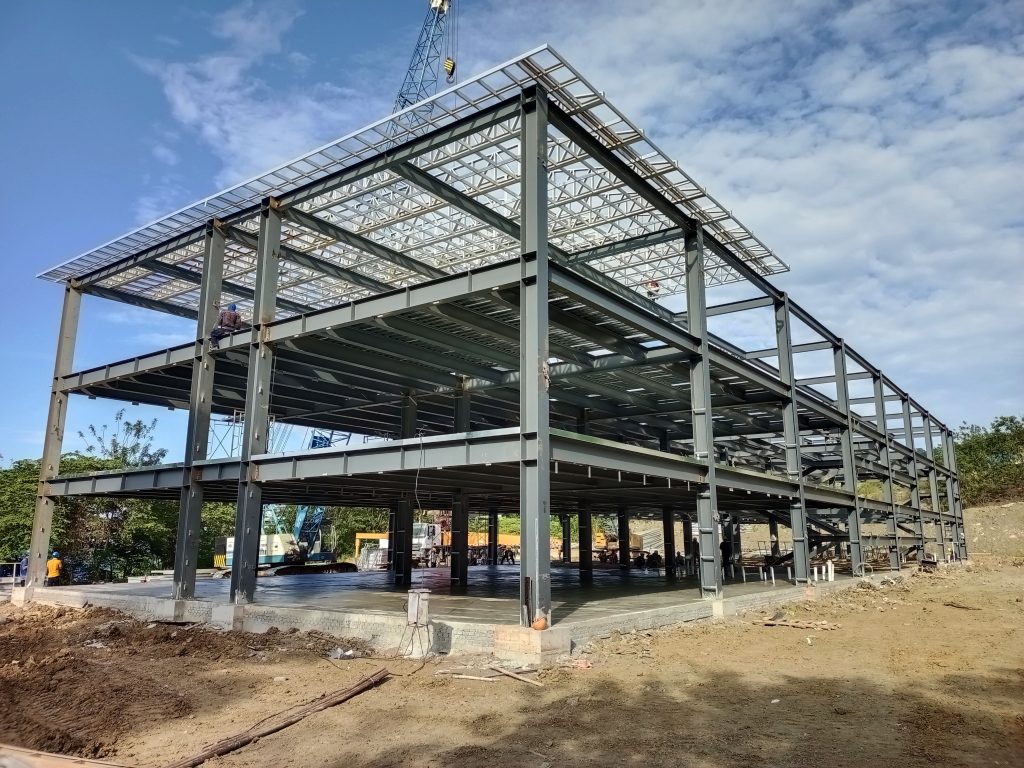Lida Group, a leading engineering and modular construction firm, recently showcased how their pre-engineered steel building system can rapidly deploy durable yet affordable temporary housing solutions in disaster recovery scenarios. The demonstration provided insight into how communities impacted by hurricanes, wildfires or other calamities may utilize the technology to house displaced residents until permanent reconstruction is complete.
Held at the company’s research and development facility, the event constructed a functional 640 sqft model unit in under 8 hours using Lida’s structural framework consisting of factory-cut steel beams, columns and shear walls. Ziwen Mu, Lida Group’s President, stated the system is pre-engineered for simple on-site assembly without heavy machinery. “Our extensive structural engineering and modular construction expertise allow emergency housing to go up dramatically faster than traditional stick-built approaches while achieving code compliance.”
Lida’s modular steel design incorporates demountable wall, roof and floor panels that can be flat-packed for compact storage and transport. “After a disaster strikes, rapid shelter is crucial but that speed often comes at the expense of quality, long-term resilience or costs,” Mu noted. “With prefabricated, reusable building components constructed off-site under more controlled factory conditions, we eliminate significant risks of delays, cost overruns or construction defects that hamper recovery efforts.”

The model unit demonstrated sound insulation, durable finishes, full accessibility standards and high wind/seismic ratings. “With configurable floor plans and scalable implementation, communities have the flexibility to quickly erect complexes sized to need while achieving multistory apartment-style housing,” Mu added. Post-disaster situations demand solutions balancing humanitarian, financial and regeneration priorities – a balancing act the system is well-positioned for, he believes.
George Wang, Director of Modular Engineering, emphasized the system’s sustainability. “Through design for disassembly, over 95% of materials are reusable or recyclable at end of life. The structural system even enables deconstruction and re-erection of units at new locations for lasting value beyond initial deployment.” Chen noted the steel framework is estimated to support a 50+ year service life with periodic refurbishment.
Following the demonstration, community leaders from disaster-prone coastal regions toured the model complex and engaged in a roundtable on post-disaster housing challenges. Topics included Code Council approval processes, FEMA reimbursement criteria, and strategies for implementing prefabricated solutions at scale. Wang was heartened by the interest shown. “Many communities still rely mainly on caravans or temporary structures after storms, which do not promote timely, dignified recovery. We hope displays like this help shift norms towards innovative building systems better serving people in their hours of greatest need.”

Disaster resilience experts commended Lida’s integrated engineering approach encompassing off-site production, standardized structural design, optimization for transportation and rapid assembly. Victor Jackson of the American Society of Civil Engineers noted, “Traditional construction has not fundamentally changed but hazards increase. Adaptations are urgently needed to modernize our recovery capacity through industrialized building.”
Some raised questions around local job creation and infrastructure requirements to support large-scale implementation. Mu assured employment opportunities would arise through local assembly, site work and ongoing community roles even as the core manufacturing occurs in controlled environments. And modular developers are actively partnering with government to pre-position portable factories, lay necessary groundwork and train local workforces.
As climate threats worsen, building community fortitude against disruption grows ever more imperative. Demonstrations of solutions like Lida Group’s steel structural system indicate paths for resilient redevelopment that safeguard human wellbeing while revitalizing livelihoods in tandem. With commitment to preparedness across all sectors, communities worldwide may find confidence to not just endure hardship but truly bounce forward to a brighter future.

Related news
-
Lida Group teams up with architects to design earthquake resistant multi-family metal houses optimized for dense urban infill communities.
2024-05-10 13:51:52
-
New patented connection system allows for rapid modular assembly of Lida Group's prefabricated load-bearing metal wall panels into high-rise apartment developments.
2024-05-10 14:04:21
-
Reports highlight social impact of Lida Group's disaster-deployable modular prefab container housing systems establishing secure camps outside illegally operating, inhumane container labor camps
2024-05-09 14:19:35
contact us
- Tel: +86-532-88966982
- Whatsapp: +86-13793209022
- E-mail: sales@lidajituan.com


